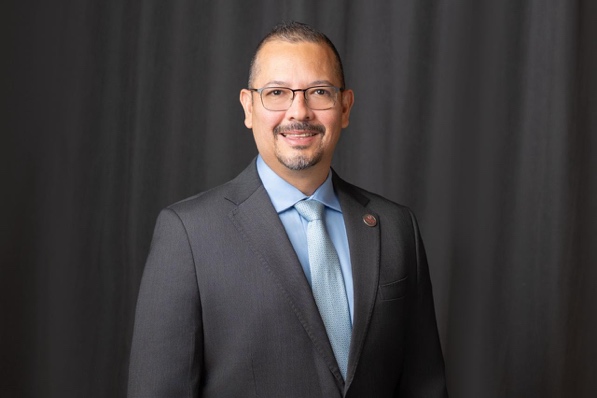
Dr. Kimberly-Joy Harris PH.D, PMP
Operator Management
|
Topic:
R&D Remote Asset Integrity Monitoring 25 Years Later
Affiliation:
34yrs Oil/Gas Midstream and Downstream & Owner Operator Management
Abstract:
Good Day Everyone, I would like to discuss with you an R&D project that I initially conducted in 1999 on behalf of Enbridge Pipelines Corrosion Control Program, where I had the incredible opportunity of managing the company’s crude oil / natural gas systems across multiple countries and leading Teams. My decision and approach to evaluating the use of “Remote Monitoring Units Technology” of essential corrosion prevention devices that protect Midstream Assets. In 1999, this was unprecedented!
Therefore today, we are going to discuss & explore some important history behind remote monitoring units, and share the benefits from the “Past, Present & Future, such as: Corrosion Control > Corrosion Prevention/Asset Integrity > “RMU Data Management/Modeling/Digital Twinning.”
I look forward to sharing my RMU field experience over the past 25+years, highlighting the various manufacturers, RMU types & features, environment selection, how data is communicated, some best practices for storing & trending the data and focus on Asset Integrity Sustainability and ensuring pipeline compliance.
Biography :
Dr. Kimberly-Joy Harris, Ph.D., PMP, brings over 30 years of expertise to the energy sector, specializing in leading and consulting on projects that enhance asset integrity and sustainability, efficiency & innovation. She is instrumental in completing various R&D Projects that is utilized today across the industry and globally. Dr. Harris provides strategic guidance, technical expertise, and leadership development in the oil and gas midstream and refineries. She holds various degrees/certificates in energy transition, physics, chemistry, electronic & chemical engineering, organizational leadership, business administration. Dr. Harris is recognized for her achievements and certifications in corrosion prevention, asset integrity engineering with competencies extending from project management, cathodic protection, internal corrosion, atmospheric inspections, data management, midstream engineering, and refinery operations. Her past roles include CEO, Manager, Supervisor and Specialist positions in asset integrity engineering programs at LIL Energy & Enbridge Energy. Where she led diverse teams, fostered best practices, developed technical training & standards, and provided top-tier solutions. Currently, Dr. Harris is the Manager Corrosion Prevention at HF Sinclair; YPP Mentor and holds the position as AMPP Vice-Chair of the BOD, the largest global community of corrosion prevention and protective coatings. and she is a Believer!
|
|
|
_HEMEN.jpg)
HEMEN V PATEL (BE-Civil, MS-WR)
Chairman
|
Topic:
Corrrosion Challenges in India's Water Infrastructure
Affiliation:
Mr. Hemen V Patel, Managing Director
Multi Mantech International Pvt. Ltd.
Ahmedabad, Gujarat
Chairman, AWWA India Association
Abstract:
This presentation will explore the critical issue of corrosion in India's Water Infrastructure, examining it's impact and potential solutions.
Biography :
Mr. H. V. Patel has over 31 years of experience in the field of Consulting Engineering. He has given justice to the position as Dire����ctor and Managing Director of MMIPL. He has a varied experience in all the field of Civil Engineering including Water, Wastewater, Property Services, Roads & Transport, Project Management, Environmental Studies, Offshore Engineering, Urban infrastructure etc. Currently he is Chair of AWWA India Association, India.
He has been involved in various projects taking lead in Planning, Design, Implementation, Execution, Project & Contract Management, Supervision and Monitoring of the works. He has actively handled various large / mega projects for Water Resources, Water Transmission, Lift Irrigation, Water Supply, Sewerage, Storm Water Drainage, Forestry projects which includes concept planning, design, preparation of drawings, Technical Specifications, Procurement documents and implementation of works. Developed specific information packages for project monitoring & management and report generation. Developed mathematical models for various applications and carried out computer simulation studies for feasibility studies and data analysis. Developed in house project management information system, Undertook the planning & implementation of various infrastructure projects.
He was part of the committee formed by Ministry of Urban Development Govt. of India for Storm Water Drainage Manual for Urban Areas and AWWA key resource expert for review of water manual for India. Under his leadership, his company has received the National Award for Excellence in Consultancy Services, 2002 from the Consultancy Development Centre, New Delhi and Institute of Engineers, Industry Excellence Award 2015 for Engineering & Consultancy Services.
Membership of Professional Societies: ASCE, AWWA India Association, Indian Water Work Association, Indian Road Congress
|
|
|

Mark Glinka
Managing Director
|
Topic:
Non-Intrusive Pipeline Inspection for City Gas, Water Crossings, and HDD Locations
Affiliation:
Founder & Managing Director,
EMPIT GmbH , Germany
Abstract:
The pipeline industry is faced with numerous challenges for assessing the integrity and determining the exact condition of the line in complex locations such as in city gas networks, water or river crossings and HDD locations. This plenary talk will focus on these challenges along with the appropriate solutions.
Challenges:
- City gas pipelines in urban High Consequence Areas: Pipelines in such areas usually have complex surfaces on ground, including paved road and concrete. Typically, several other buried metallic structures/utilities also exist adjacent to pipelines in addition to overhead High-Tension Crossings, Metro Rail, Underground power cables, all becoming sources of interference. Finally, these lines are all considered non-piggable, therefore no possibility of an ILI tool and very limited options for integrity assessment.
- Water Crossings for geotechnical hazards and HDD: With no aboveground access to the water or river crossing areas for a pipeline, the only option for assessment is during the periodic ILI, which may be every 5 to 10 years. During this time due to extreme weather events based on climate change (floods, earthquakes etc.), many undesired forces may act on a pipeline resulting in deformation, out of roundness, displacing the pipeline from the original right of way or an eventual incident. HDD mode of pipeline laying is usually utilised, and this ensures pipelines can be laid under water, river crossings and also under major highways or populated areas to ensure no damage to the infrastructure while laying.
No options remain for frequent localised inspection of these wet areas or HDD locations in between the ILI cycle.
Solution:
Current Magnetometry Inspection (CMI) is a new Over-the-Line technology for rapid detection and quantitative assessment of corrosion in buried pipelines especially in complex locations such as above.
CMI injects a controlled multi-frequency AC signal (2 – 2,000 Hz) into an operating pipeline and records the resulting 3-D magnetic field with densely packed magnetometer arrays. This configuration allows for quantitative non-intrusive detection of any coating holidays, bending strain analysis, depth of cover and mapping of the line. Dependent on the terrain this can be performed by walking, sailing or flying above the pipeline! Not only that, but the coating fault locations are also differentiated between active or passive corrosion locations non-invasively, providing decision-ready corrosion-risk ranking and reducing unnecessary expensive digs.
With more than 15,000 kilometers surveyed and peer-reviewed results from an EU research programme demonstrating reliable IR-free determination under normal CP operation, CMI emerges as a proven, non-invasive integrity solution for both piggable and unpiggable buried pipelines—ready to support hydrogen repurposing and other future challenges.
Biography :
Mark Glinka is the Founder & Managing Director of Electromagnetic Pipeline Testing (EMPIT) and the driving force behind Current Magnetometry Inspection (CMI)—a non-intrusive method to quantify corrosion, coating condition, and 3D geometry across city gas networks, transmission lines, water crossings, HDD segments, and geohazard corridors. Under his leadership, EMPIT is recognized for winning the most prestigious innovation prize in Germany and has become the leading corrosion survey company in Europe.
|
|
|

Juan Caballero
Chairman
|
Topic:
From Field Lessons to Strategic Vision: AMPP as a Lighthouse for Corrosion Management in Marine and Industrial Assets
Affiliation:
Chairman, AMPP Board of Directors
Managing Director, Naval & Industrial Solutions
Academic Director, Integrity Management Research & Training Hub
Abstract:
Marine terminals, shipyards, industrial infrastructure and defense assets are among the most demanding environments for corrosion control. Steel and concrete structures in these sectors face constant exposure to harsh marine conditions, high operational demands, and rising sustainability expectations. Failures in these assets can disrupt trade, energy supply, community safety, environment protection, and national security, making corrosion management a challenge of both technical precision and strategic importance.
This plenary lecture will share insights from more than two decades of field experience protecting marine, industrial, and defense assets across the Americas including the realities of underdeveloped regions where corrosion awareness, ethical standards, and workforce readiness are often limited. Navigating these environments has underscored the need for corrosion management to evolve beyond compliance, becoming a discipline guided by global collaboration, sustainability, and strategic vision.
In this journey, AMPP plays the role of a lighthouse, providing international standards, certification frameworks, training & certification and professional networks that illuminate the path forward. The session will also highlight how education, workforce development, innovation and stronger connections between organizations and academia are essential to closing these gaps. The aim is to inspire professionals to view corrosion management not only as asset protection, but as a driver of resilience, sustainability, and global equity.
Biography :
Juan Caballero is an Industrial Engineer with over 23 years of experience in corrosion control, protective coatings, and asset integrity across industrial, marine, and defense sectors. He is the current Chairman of the AMPP Global Center Board of Directors, becoming the first Latin American to hold this position in the 80+ year history of NACE, SSPC, and AMPP. He is also the Managing Director of Naval & Industrial Solutions, a third-party consulting and inspection firm, and Academic Director of Integrity Management Research & Training Hub, an AMPP training provider Licensee in Central America.
Juan’s academic background includes a Specialization in Integrity & Corrosion Management, a diploma as an Internal Corrosion Specialist Technician, and dual master’s degrees in business Direction & Strategic Management and in Higher Education. He is currently pursuing doctoral research in Education with a focus on Artificial Intelligence and is exploring opportunities for complementary research in coatings particularly in the areas of coatings failures, strategic coatings management, and applications for critical assets in marine, infrastructure, and defense.
Juan is also an AMPP multi-certified professional holder of AMPP Protective Coatings Specialist (PCS), AMPP CIP Senior Coatings Inspector (CIP Senior), AMPP Concrete Coatings Inspector (CCI), AMPP Fireproofing Inspector (PFP), and other AMPP training programs.
Recognized with global awards for education - AMPP Richard W. Drisko Global Education Award and for leadership – AMPP Global Center Globe Award. Through his leadership, Juan is committed to advancing corrosion awareness, sustainability, and workforce development worldwide.
|
|
|